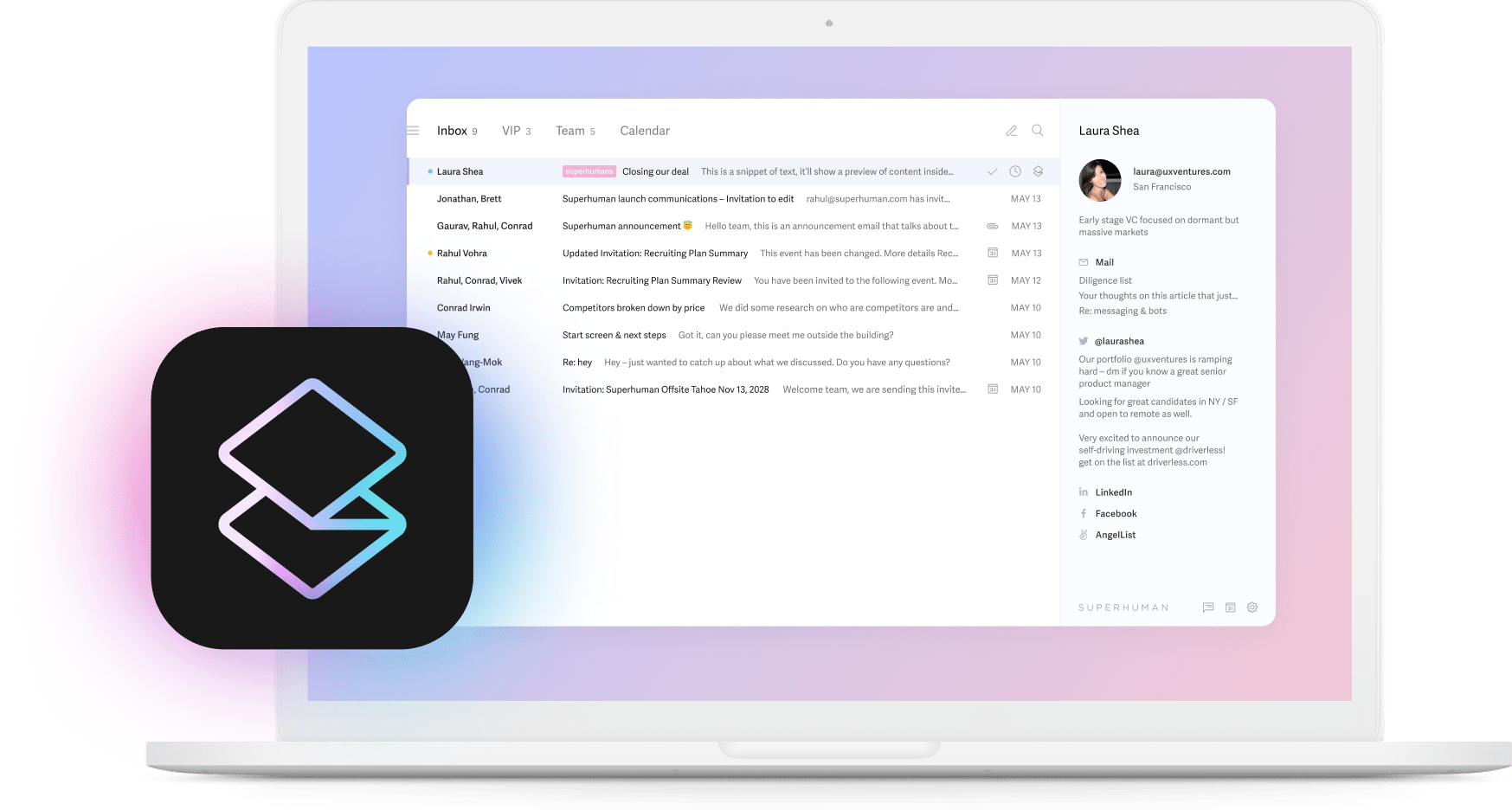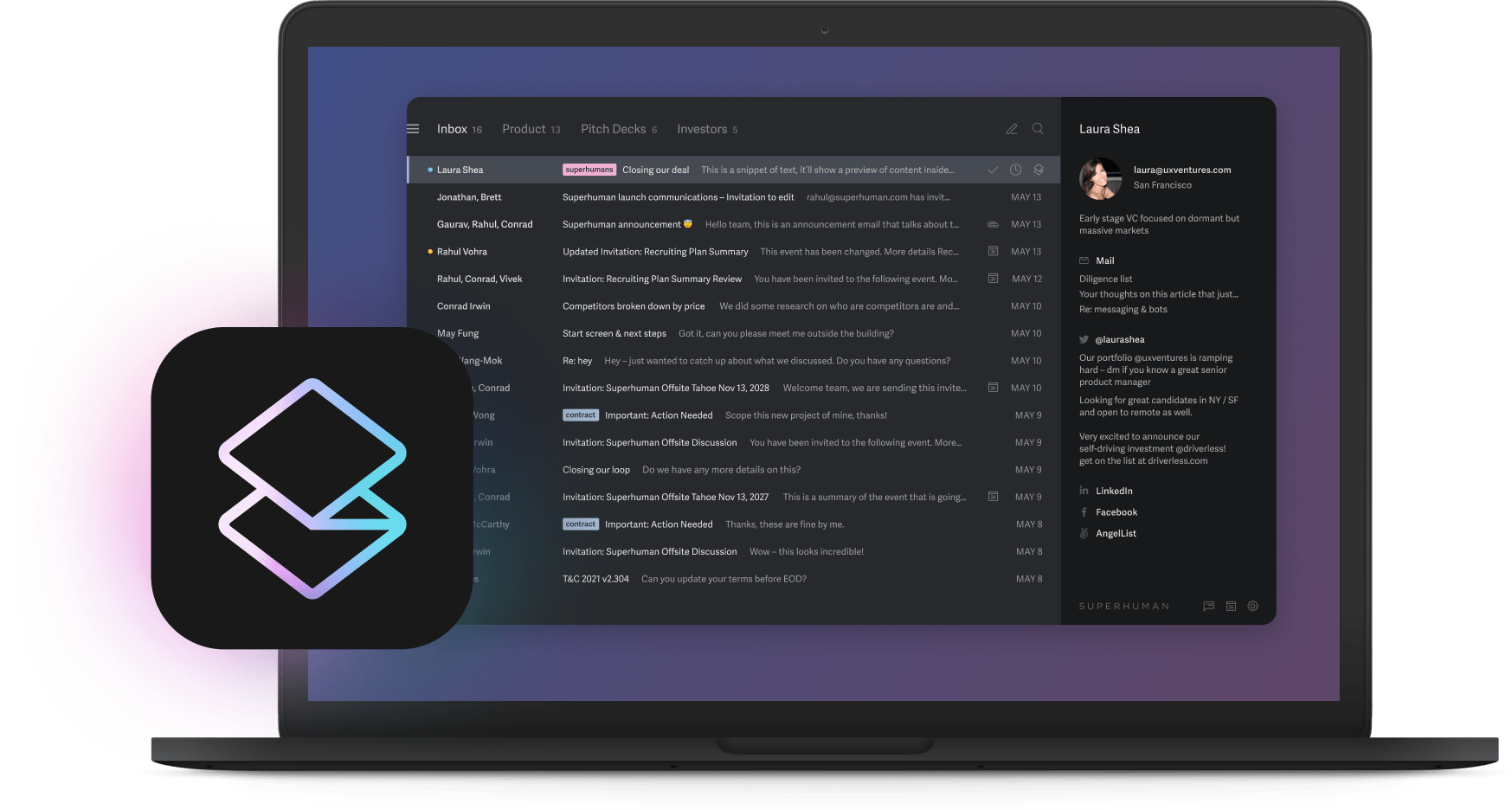
Executives waste eight to 12 hours weekly on email that doesn't necessarily move their business forward. The distinction between busy and productive work isn't just semantics; it's a strategic imperative. Research shows that 28% of the workday is consumed by email (117 emails received daily), yet this reactive pattern doesn't correlate with actual productivity.
Meanwhile, constant interruptions cost 23 minutes of recovery time per disruption. This guide reveals evidence-based frameworks to help you identify the difference between busy work and productive work, reclaim those hours for strategic thinking, and drive measurable business results. The paradox: being busy and responding to everything directly reduces your capacity for what actually matters.
Busy vs productive: What do they each mean?
In our always-on world, there's a lot of pressure to be (and look) busy at all times. But many people move frantically from task to task, never making any real progress. They're busy, but they aren't productive.
Being productive is less about always having something to do and more about making sure that what you're doing is propelling you toward a goal. Busy people stay busy for the sake of it. Productive people work with purpose and intent.
The difference becomes even more critical when you consider that 48% of employees and 52% of leaders experience chaotic, fragmented work patterns. Leaders experience more chaos than their teams.
What does a busy day vs productive day actually look like?
- Monday. You have back-to-back meetings until noon with new action items at each one. Your afternoon flies by moving from task to task, and you're surprised when 5 PM arrives. You consider working after dinner because there's still more to do.
- Tuesday. You delegate a morning meeting after reviewing the agenda, freeing up time for deep work. By lunch, you've completed several steps toward a long-term goal. You finish your calendar, blocked afternoon tasks, and plan tomorrow's workload, ending before 5 PM with time to relax.
Tuesday was productive. Monday was just busy.
Here's the difference: Monday was consumed by constant email interruptions and reactive responses. Tuesday involved focused deep work and batch-processed communication.
8 signs you're just busy (and how to fix it so you become more productive)
Because the lines between busy and productive can be so blurred, here's how to tell if it's time to start reframing your approach so you can move away from busy work.
1. Busy people don't have goals
You're busy when you work on things just for the sake of working on them, without working toward a larger goal. Companies that implement people-focused performance management with clear goal-setting are 4.2 times more likely to outperform their peers and achieve an average 30% higher revenue growth.
To be as productive as possible, as many tasks as possible should be helping you move closer to a goal. The most productive people set long-term goals, then break those down into smaller, short-term goals they can work toward daily.
2. Busy people have many priorities
Another hallmark of an unproductively busy person is having too many priorities. Use prioritization frameworks like the Eisenhower Matrix to narrow down your tasks so you can focus on just one (or at most, a handful) of important priorities.
You find yourself trapped in reactive work patterns where constant interruptions prevent strategic prioritization. Rather than deliberately treating everything as equally important, you lack the protected focus time required to identify priorities, with too much of your time consumed by meetings and interruptions. Each email interruption carries a recovery cost, creating a cognitive toll that extends beyond time lost, impairing the working memory and decision-making capacity required for strategic prioritization.
3. Busy people multitask, while productive people focus
What you perceive as multitasking is actually rapid task switching. Your brain can't effectively perform two cognitive tasks simultaneously. Each task switch carries a significant cognitive cost. Up to 40% of productive time can be consumed by the mental blocks and cognitive reconfiguration required for switching.
The recovery time penalty: As we already covered, it takes an average of 23 minutes to regain full focus after an interruption or task switch. For you, as an executive, managing email alongside other work, each interruption doesn't just consume the time spent reading and responding. It consumes an additional 10-23 minutes of lost productivity during the recovery period.
Peer-reviewed research documents that digital multitasking impairs working memory, reduces self-control capacity, and compromises cognitive load management. High-stress professional research finds that multitasking increases mental demand, reduces neurocognitive performance, and elevates error rates. This is a critical distinction when you're making high-stakes decisions.
In contrast, productive people protect blocks of focused time through practices like batch processing email during designated times (rather than constant checking), using single-task focus periods, and minimizing application switching. This enables the sustained attention required for strategic thinking and meaningful work.
4. Busy people struggle with saying no; productive people are selective
Delegation research reveals that only 30% of leaders believe they can delegate well, and among those, only one-third are considered effective by their teams. This means approximately 90% of leaders struggle with effective delegation.
Productive people know how to say no to unimportant tasks and delegate urgent yet unimportant work to focus on their bigger strategic contributions.
5. Busy people run out of time
A big piece of the productivity puzzle is time management, but busy people tend to waste time rather than maximize productivity. The average US knowledge worker loses 127 hours annually to distraction, while leaders lose 683 hours per year. This represents $37,000 per leader annually in lost productivity.
One effective tool is time blocking, which encourages you to schedule every part of your day, including focused work time. This helps you go into each day knowing exactly what you're doing and when, limiting distractions and protecting high-value activities.
6. Busy people get distracted constantly
Effective distraction management requires organizational commitment through specific supervisor-led interventions, including implementing quiet hours, establishing communication guidelines, and creating enforcement mechanisms, rather than relying solely on individual willpower.
Proven organizational strategies (evidence-based leadership interventions):
- Implement "quiet times" or designated focus blocks at team/organizational level
- Establish clear communication guidelines specifying when interruptions are appropriate vs. when to use asynchronous communication
- Create rotating schedules for managing urgent requests to distribute interruption burden equitably
- Model appropriate interruption management behaviors as organizational leaders, actively respecting team focus time
- Recognize and accommodate individual differences in how team members handle interruptions
Critical implementation note: Effective interruption management requires organizational commitment and structured leadership intervention. Individual willpower alone isn't sufficient.
7. Busy people confuse activity with achievement
Simply increasing hours worked without strategic focus can actually be counterproductive. The critical variable isn't effort quantity but effort alignment. Working intensively on poorly chosen priorities yields consistently poor results regardless of the effort invested. This finding directly challenges conventional wisdom that "working harder" solves productivity challenges, emphasizing instead that you must ensure your effort targets strategically important work.
Busyness has become a social norm and status symbol, where being perpetually "busy" signals value and importance. Yet productivity research reveals that working hours don't correlate linearly with output.
8. Productive people strategically manage cognitive energy and brain states
Managing energy is as important as managing time. When 141 companies across six countries reduced hours in the largest four-day workweek trial, productivity was maintained or improved because workers demonstrated fewer mistakes and more intense focus during compressed schedules.
Productive people understand that working smarter, not just longer, drives results.
How to measure your productivity (not your busyness)
Many executives track the wrong metrics. Hours worked, emails sent, and meetings attended measure activity, not achievement. To truly understand whether you're being productive or just busy, track these evidence-based metrics instead:
- Output quality: Measure the impact of completed projects, not just their completion. Did your work move strategic goals forward?
- Focus time: Track uninterrupted work blocks of 2+ hours. Research shows these periods drive 80% of meaningful output.
- Decision velocity: Monitor how quickly you make high-quality decisions. Productive executives make faster strategic choices with better outcomes.
- Energy levels: Rate your mental clarity throughout the day. Productive work should feel challenging but sustainable, not draining.
Use time tracking to understand where your hours actually go versus where you think they go. Most executives discover they spend 60%+ of their time on reactive work that doesn't align with their strategic priorities.
Building sustainable productivity habits
Long-term productivity isn't about heroic effort; it's about building systems and habits that make productive work the default choice.
- Start with morning routines: Your first 2-4 hours after waking represent peak cognitive capacity. Protect this time ruthlessly for your most important work.
- Implement weekly reviews: Spend 30 minutes each Friday reviewing what actually moved your goals forward versus what just kept you busy. Adjust next week's priorities accordingly.
- Create decision frameworks: Document your criteria for saying yes to new commitments. This reduces decision fatigue and ensures alignment with strategic priorities.
- Automate ruthlessly: Every repetitive task you automate frees cognitive capacity for strategic thinking. Start with email templates, calendar scheduling, and task management automation.
Turn your email into a productivity advantage
Given that you spend a significant portion of your workday on email, and communication overload causes cognitive impairment that reduces work performance and decision-making quality, optimizing email management isn't a "productivity hack." It's strategic infrastructure.
Superhuman Mail's approach addresses research-validated productivity challenges:
You face critical obstacles: spending significant time on email, receiving 117 emails daily, losing focus recovery time after each interruption, and experiencing cognitive overload that impairs decision-making quality. Superhuman directly addresses these evidence-based challenges through:
- Batch processing support: Keyboard-driven workflows enable scheduled email sessions rather than continuous interruption, protecting the 2-hour uninterrupted blocks required for deep work and flow states during midday cognitive dips (supported by neuroscience research showing you should reserve peak cognitive hours for strategic thinking rather than administrative email processing).
- Interruption protection: Aggressive notification management protects the 2-hour uninterrupted blocks required for flow states.
- Cognitive load reduction: Keyboard shortcuts and streamlined workflows minimize extraneous cognitive load: the unnecessary mental effort from poor interface design that impairs your decision-making and working memory capacity. Features like Auto Summarize display 1-line summaries above every conversation so you can skip reading full threads.
- Speed and efficiency: Fast email processing with Instant Reply reduces cognitive switching costs and compresses email session duration, enabling more time for flow-state work and strategic activities. Remind Me brings messages back at the perfect time so you never drop the ball.
- ROI calculation: At a 20% email efficiency improvement for a $150K executive spending 11.2 hours weekly on email, the annual value reaches $11,440, while Superhuman costs $300 annually. This delivers 32x ROI from time savings alone, before considering the cognitive performance benefits that improve decision-making quality and reduce errors.
Transform your inbox into your most productive tool
Ready to implement the research-backed strategies that turn busy email habits into productive communication management? Superhuman Mail eliminates the cognitive overload that consumes a significant portion of your workday, helping you reclaim focus time, accelerate decisions through reduced cognitive load, and achieve the speed and systematic approach that drives executive performance.
By batching email processing and reducing recovery time after interruptions, you can protect the deep work blocks that fuel strategic thinking and measurable business impact.
Get started with Superhuman Mail






